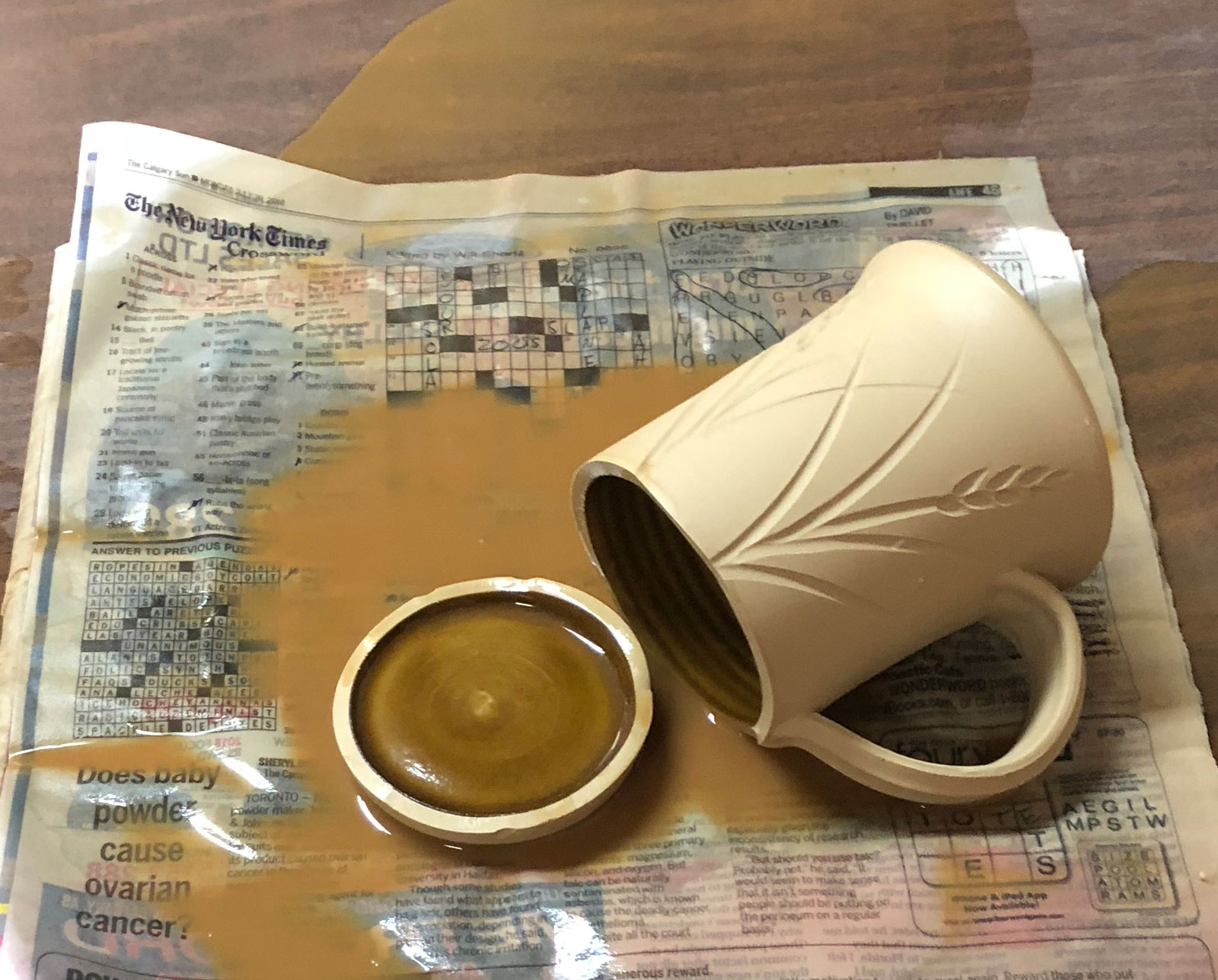Is inside-only glazing a good idea? We say it is not.
This mug is made from 325 mesh MNP, the strongest porcelain I have. Since the walls are of even thickness with no abrupt corners or contour changes and the glaze is thinly and evenly applied I thought I could follow a social-media-driven trend and glaze only on the inside. But I got glaze compression time-bombs waiting for hot coffee triggering! Three other mugs failed this same way! But four with this same glaze inside and out were fine. Why? The outside glaze counters the inside one pushing outward. And it closes crack initiation points.
I got lots of pushback on social media saying glaze compression problems are overblown. But I also got stories and pictures much worse than this (especially with thick and drippy glazes). But, some still feel that inside-only glazing can work by carefully tuning the insight-live.com/glossary/18">thermal expansion fit between body and glaze. Or even by accident. Either way, there is still an elephant in the room: Glaze fit has to be just right - too much and pieces break, too little and the glaze crazes. That is a problem because it brings intolerance of even slight changes in body, glaze or firing.
Of course, by making thick-walled ware having a glaze thickness is not excessive, you may still get away with doing everything just advised against! But think about this: This coffee could have ended up in my lap rather than on my paper?
Pages that reference this post in the Digitalfire Reference Library:
Drip glazing and bare outsides: Deceptively difficult., Example of COE curves considered a good fit for body and glaze, A mug cracks before your eyes because of glaze compression, The handle is strong, the mug is weak. Learn why., Here is how far some potters are taking drip glazing, Glaze Compression

This post is one of thousands found in the Digitalfire Reference Database. Most are part of a timeline maintained by Tony Hansen. You can search that timeline on the home page of digitalfire.com.
